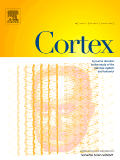
JOURNAL OF COMPARATIVE NEUROLOGY
Scope & Guideline
Connecting Minds: Comparative Insights in Neuroscience
Introduction
Aims and Scopes
- Comparative Neuroanatomy:
The journal publishes research that compares the structural organization of the nervous system across different species, providing insights into evolutionary adaptations and functional significance. - Neurodevelopmental Studies:
Research focusing on the development of neural circuits and structures during various life stages, including embryonic and postnatal development, is a key area of focus. - Functional and Behavioral Neuroscience:
The journal includes studies that link neural architecture to behavior and cognition, exploring how anatomical differences influence sensory processing, motor control, and other cognitive functions. - Molecular and Cellular Neuroscience:
Research that investigates the molecular and cellular mechanisms underlying neural function, including synaptic transmission, neurogenesis, and neuroinflammation, is prominently featured. - Pathological Studies:
The journal addresses comparative aspects of neurodegeneration and neurological disorders, contributing to the understanding of diseases like Alzheimer's and their impacts on neural structures.
Trending and Emerging
- Neuroplasticity and Aging:
Recent publications have increasingly focused on neuroplasticity, particularly in the context of aging and neurodegenerative diseases, reflecting a growing interest in how neural circuits adapt over time. - Neuroinflammation and its Role in Neurological Disorders:
There is a rising trend in studies examining the role of neuroinflammation in various neurological conditions, emphasizing the importance of understanding immune responses within the nervous system. - Advanced Imaging Techniques:
The use of innovative imaging techniques, such as light sheet microscopy and high-resolution MRI, has gained traction, allowing for detailed visualization of neural structures and circuits in vivo. - Interdisciplinary Approaches:
An increase in interdisciplinary studies that combine neuroanatomy with molecular biology, genetics, and computational modeling is evident, reflecting a broader trend towards integrating diverse scientific methodologies. - Functional Connectivity and Network Analysis:
Emerging research focusing on the functional connectivity of neural networks, particularly in relation to behavior and cognition, has become more prevalent, showcasing the journal's commitment to understanding the brain as a complex system.
Declining or Waning
- Paleo-neurology:
Research focusing on the nervous systems of extinct species or fossils appears to be less frequently published, possibly due to the challenges in obtaining empirical data and the greater emphasis on contemporary comparative studies. - Behavioral Ecology of Non-Mammalian Species:
While still a relevant area, the focus on behavioral ecology studies that do not directly link to neuroanatomical findings has diminished, as the journal increasingly emphasizes neuroanatomical and functional correlations. - Studies on Non-Vertebrate Nervous Systems:
There has been a noticeable decrease in the number of papers exploring the neural systems of non-vertebrate species, which may be attributed to a growing preference for studies that directly inform vertebrate neurobiology.
Similar Journals

NEUROSCIENCE RESEARCH
Connecting Science and Application in NeuroscienceNEUROSCIENCE RESEARCH, published by Elsevier Ireland Ltd, is a leading journal in the field of neuroscience, with a notable reputation for disseminating high-quality research that spans a variety of topics within the discipline. With an ISSN of 0168-0102 and an E-ISSN of 1872-8111, this journal serves as a vital platform for both established researchers and emerging voices in the field. Ranking in the Q2 quartile in both Medicine and Neuroscience categories, it has been recognized as a reliable source of innovative findings since its inception in 1984, with continuous publication through 2024. Although it does not currently offer Open Access options, the journal is indexed in Scopus, holding a significant position at Rank #48/113 in General Neuroscience, reflecting its contribution to advancing the understanding of neural mechanisms across various contexts. With its address anchored in Ireland, NEUROSCIENCE RESEARCH plays an essential role in bridging scientific inquiry and practical applications, making it an indispensable resource for researchers, professionals, and students dedicated to the burgeoning field of neuroscience.

Frontiers in Molecular Neuroscience
Pioneering research for a deeper understanding of the brain.Frontiers in Molecular Neuroscience, published by FRONTIERS MEDIA SA, is an esteemed open-access journal dedicated to advancing our understanding of the molecular mechanisms underlying neurological functions and disorders. Since its inception in 2008, the journal has established itself as a reputable source of cutting-edge research, earning a respectable Q2 ranking in both the fields of Cellular and Molecular Neuroscience and Molecular Biology as of 2023. With an ongoing commitment to fostering innovation, the journal presents a platform for researchers, professionals, and students to disseminate their findings and engage in scholarly discourse. The E-ISSN 1662-5099 ensures that research is readily accessible, facilitating the exchange of knowledge crucial to tackling the complexities of neurological conditions. Situated in Switzerland, the journal’s global reach is augmented by its open-access model, allowing for wide dissemination of critical research findings to a diverse audience. Join the vibrant community of scientists and practitioners who are shaping the future of molecular neuroscience through their contributions to this dynamic journal.

Frontiers in Neuroanatomy
Unlocking the mysteries of the brain, one study at a time.Frontiers in Neuroanatomy is a premier open access journal published by FRONTIERS MEDIA SA, dedicated to advancing the understanding of neuroanatomy and its implications in health and disease. Established in 2007 and operating under an open access model, this journal aims to disseminate high-quality research that bridges the gap between cellular and molecular neuroscience and anatomical studies. Based in Switzerland, Frontiers in Neuroanatomy has made significant strides in its impact, earning a Q1 ranking in Anatomy and notable Q2 rankings in diverse areas of neuroscience as of 2023. With an active role in the scientific community, it empowers researchers to share their findings widely, fostering collaboration and innovation in a multidisciplinary environment. Researchers, professionals, and students alike can explore a rich collection of peer-reviewed articles, enhancing their understanding of vital neuroanatomical structures and functions, positioned at the intersection of anatomy and neuroscience.

CORTEX
Advancing Understanding of the Brain and BehaviorCORTEX is a premier international journal published by Elsevier Masson, focusing on the cutting-edge areas of cognitive neuroscience, psychology, and neurology. With an impressive impact factor that places it in Q1 quartiles across multiple categories such as Cognitive Neuroscience and Neuropsychology, this journal serves as a vital resource for researchers, clinicians, and students alike. Established in 1964, CORTEX has continued to excel in disseminating high-quality scholarly work, offering insights that significantly enhance our understanding of the brain's functioning and behavior. Although not an open-access publication, it provides various access options to ensure the dissemination of knowledge is as wide-reaching as possible. As the field of cognitive psychology evolves, CORTEX remains at the forefront, fostering an environment for interdisciplinary collaboration and innovation. Researchers seeking to stay engaged with the latest advancements will find CORTEX an indispensable tool for their professional development.

BRAIN BEHAVIOR AND EVOLUTION
Decoding the Interplay of Brain and BehaviorBRAIN BEHAVIOR AND EVOLUTION, with ISSN 0006-8977 and E-ISSN 1421-9743, is a prominent journal dedicated to the intricate connections between brain function, behavior, and evolutionary processes. Published by KARGER in Switzerland, this journal has established itself as a crucial resource in the fields of Behavioral Neuroscience and Developmental Neuroscience, evidenced by its respectable 2023 category quartiles of Q2 and Q3, respectively. With a rich publication history spanning from 1968 to 2024, BRAIN BEHAVIOR AND EVOLUTION presents original research articles, reviews, and theoretical contributions that investigate the biological underpinnings of behavior, making it an essential platform for researchers, professionals, and students committed to advancing our understanding of neurobiological and evolutionary mechanisms. Although it is not an open-access journal, its rigorous peer-review process ensures that only high-quality research is disseminated, maintaining the journal's impact in the academic community.

NEUROSCIENCE
Charting new territories in the study of the nervous system.NEUROSCIENCE, published by PERGAMON-ELSEVIER SCIENCE LTD, has established itself as a reputable journal in the field of neuroscience since its inception in 1976, continuing its contributions through 2024. With a Category Quartile ranking of Q2 in Neuroscience (miscellaneous) and a Scopus Rank of #41 out of 113, this journal represents a critical platform for the dissemination of innovative research and insights. Although it currently does not offer open access options, NEUROSCIENCE aims to advance our understanding of the nervous system by publishing high-quality original research, reviews, and methodological articles, thereby engaging a comprehensive audience of researchers, professionals, and students alike. With an impact factor that reflects its significance in the scientific community, this journal remains a go-to source for cutting-edge discoveries and scholarly discussions in the dynamic field of neuroscience.

Neural Development
Pioneering Research in Brain Structure and FunctionNeural Development, published by BMC, is a premier open access journal dedicated to advancing the field of Developmental Neuroscience. Established in 2006, this journal continues to foster high-caliber research on the cellular and molecular mechanisms underlying neural development, contributing significantly to our understanding of brain structure and function. With a commendable Q1 ranking in the 2023 category of Developmental Neuroscience and a notable position as the 8th out of 37 journals in the field on Scopus, it is recognized for its rigorous peer-review process and impactful publications. Researchers, professionals, and students benefit from the widespread accessibility of its content in an evolving landscape of neuroscience studies. As an open-access journal, Neural Development ensures that groundbreaking discoveries are available to a global audience, facilitating collaboration and innovation in the exploration of neural mechanisms. With its strong commitment to quality and relevance, this journal remains at the forefront of developmental neuroscience research.

NATURE REVIEWS NEUROSCIENCE
Advancing the frontiers of neurological science.NATURE REVIEWS NEUROSCIENCE is a prestigious journal published by NATURE PORTFOLIO, renowned for its commitment to advancing the field of neuroscience. Since its inception in 2000, it has become a significant platform for disseminating comprehensive reviews and insights that shape the understanding of neurological science. With an impressive Scopus ranking of #2 out of 113 in the General Neuroscience category, this journal consistently engages the top 2% of researchers and professionals in the field, underscoring its impactful contributions. The journal not only provides a forum for high-quality reviews but also bridges emerging research trends with established knowledge, fostering a robust discourse among scholars and practitioners. As a Q1 journal in Neuroscience (miscellaneous), NATURE REVIEWS NEUROSCIENCE offers invaluable access to critical research developments, making it an essential resource for students, researchers, and professionals aiming to stay at the forefront of neuroscience advancements. Explore the latest findings and engage with a global community dedicated to unraveling the complexities of the nervous system.

Frontiers in Systems Neuroscience
Connecting minds through groundbreaking research.Frontiers in Systems Neuroscience is a premier open-access journal published by FRONTIERS MEDIA SA, dedicated to advancing the understanding of the complex systems that underpin neural function and behavior. Established in 2007 and based in Switzerland, this journal has gained recognition for its rigorous peer-reviewed articles that contribute significantly to the fields of Cellular and Molecular Neuroscience, Cognitive Neuroscience, and Developmental Neuroscience. As of 2023, it proudly holds a Q2 ranking in several neuroscience categories, reflecting its high impact and relevance in the academic community. The journal is accessible to researchers, professionals, and students worldwide, providing a platform for innovative research while promoting collaborative scientific dialogue. With a commitment to open access, Frontiers in Systems Neuroscience ensures that groundbreaking findings are readily available to enhance knowledge sharing across the globe. This makes it an essential resource for anyone looking to stay at the forefront of neuroscience research.

CEREBRAL CORTEX
Pioneering research in cognitive and molecular neuroscience.CEREBRAL CORTEX, published by Oxford University Press Inc, is a premier journal dedicated to advancing the field of neuroscience, specifically focusing on the cellular, molecular, and cognitive aspects of cortical structure and function. With an impressive impact factor that situates it in the top quartile (Q1) of its categories for 2023, this journal holds significant relevance for researchers and professionals interested in the latest discoveries and methodologies in both Cognitive Neuroscience (ranked #31 out of 115) and Cellular and Molecular Neuroscience (ranked #48 out of 97). Operating without an open access model, it ensures rigorous peer review and dissemination of high-quality research from across the globe. Since its inception in 1991, CEREBRAL CORTEX has established itself as a critical platform for educators and inventors, pushing the boundaries of knowledge in understanding brain function and its implications for behavior. Researchers and students alike will find this journal an invaluable resource for both foundational and cutting-edge studies in neuroscience.